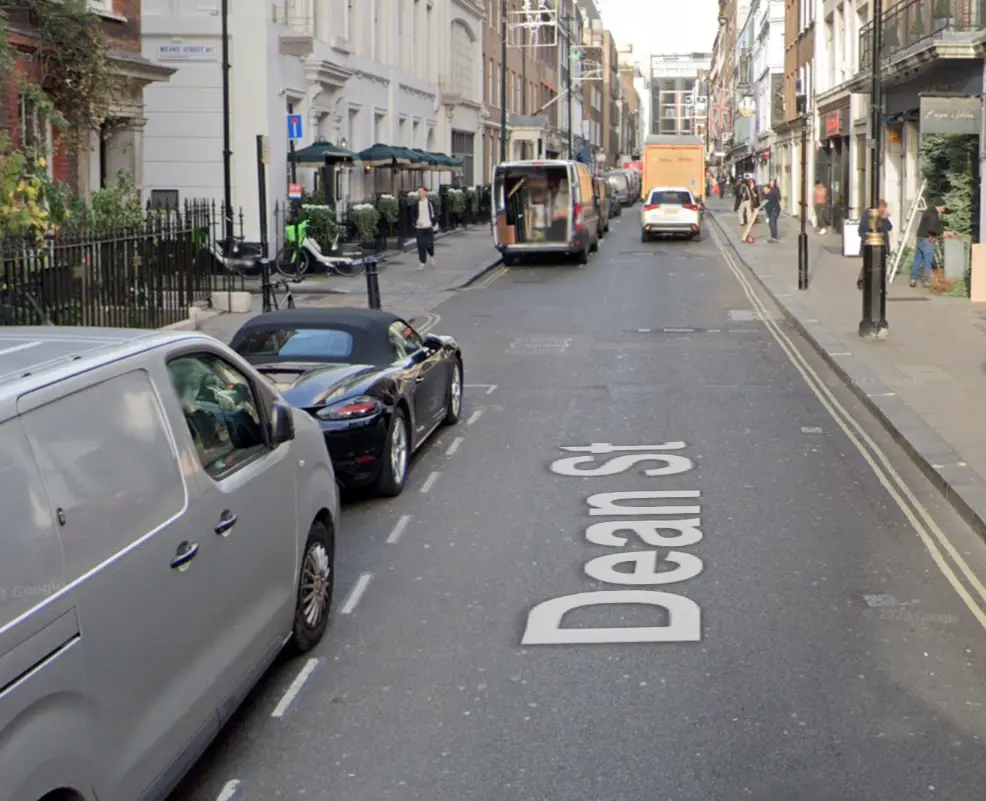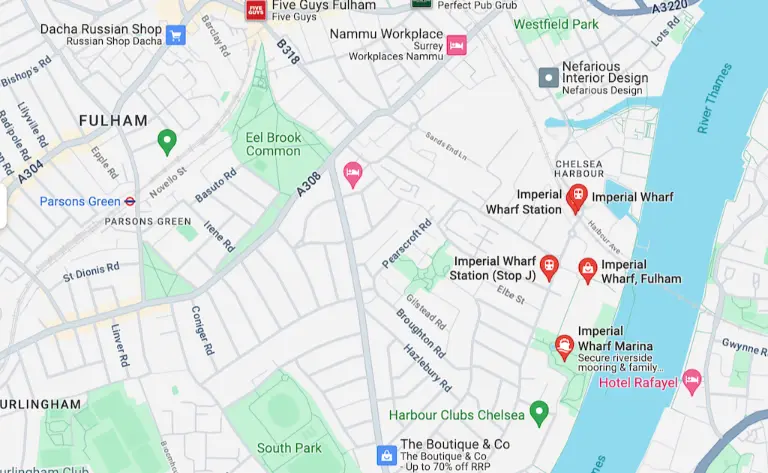26-30 Old Church Street, an exceptional development in the heart of Old Chelsea, has recently been launched by Martins Properties. The development is situated in a prized and peaceful neighbourhood and is just moments from the River Thames and King’s Road.
When approved by the Royal Borough of Kensington and Chelsea’s planning committee in 2016, the architects Scott Brownrigg were applauded for their contemporary approach. The groundwork contractors were also awarded a Bronze Considerate Constructors Scheme 2020 National Site Award after completing the project. Working with architects Scott Brownrigg, Martin’s Properties has developed a contemporary scheme in the context of a historic location, on the site of the original Chelsea porcelain factory.


The boutique development comprises four lateral apartments and two townhouses – one townhouse has already been sold to a British buyer off-plan. The remaining townhouse – Sprimont House – is a modern interpretation of a traditional Chelsea townhouse flooded with natural light, space and inclusion of luxuries. It also includes a lift to each floor. The classic proportions have been energised with contemporary interiors by award winning designer Andrew Martin, with an eclectic basement floor serving as a vibrant entertainment space bedecked in Andrew Martin’s signature style Martin Waller, founder of Andrew Martin, is described by The Independent as having:
“the spirit of Peter Pan and the lifestyle of Indiana Jones”.
The townhouses are approached through the original entrance off Old Church Street into a secluded courtyard which has access to a sophisticated car stacking system. One of the townhouses has already been sold to a British buyer off plan. The remaining townhouse is a modern interpretation of a traditional Chelsea townhouse flooded with natural light, space and inclusion of luxuries. It also includes a lift to each floor. The classic proportions have been energised with contemporary interiors by award-winning designer Andrew Martin, with an eclectic basement floor serving as a vibrant entertainment space bedecked in Andrew Martin’s signature style.
Chelsea Porcelain Factory
It’s extremely unusual for a development to have a heritage as creative and fascinating as this one. The first-ever porcelain factory in England began production in Chelsea around 1745 on the very same site as Sprimont House. In fact, the factory was under the directorship of Nicholas Sprimont, and it received royal patronage and led the country’s porcelain revolution. Queen Elizabeth The Queen Mother was an avid devotee of its botanical tableware which is still being produced today: Royal collection shop. Many pieces remain in the royal collection.
Chelsea Porcelain Factory played a pivotal role in the area’s artisanal history – Chelsea’s inherent creative spirit was born around this time in the eighteenth century when inspired craftspeople made Chelsea’s porcelain famous worldwide. One hundred years later, the area was a hotbed for progressive art and literature. In the sixties and punk era, its avant-garde visionaries defined fashion on King’s Road.
Nicholas Sprimont
Nicholas Sprimont was a goldsmith from Liège in Belgium. His championing of an English porcelain factory, in the vein of successful English producers, Meissen and Sèvres, was a risky venture. But Sprimont aimed high, making sumptuous ornaments and tableware for only the wealthiest clients and even King George III. Such was Sprimont’s entrepreneurial spirit that he once wrote to the government asking them to cease foreign porcelain imports to give the English a break. FUN FACT – I’ve been told that bits of porcelain were actually found on the site before the development was built!!
Old Church Street
Sprimont House stands in a covetable position in the heart of Old Chelsea on Old Church Street, just moments from the River Thames and discreetly set back from the irrepressible life of King’s Road. Perhaps as a result of the Chelsea Porcelain Factory, Old Church Street has clearly always been a magnet for young luminaries – few people can boast their street has a Manolo Blahnik store, and the original at that! For almost 50 years, the inimitable shoe designer’s first retail premises have stood at 49–51 Old Church Street, and it’s a place of dreams and legend. When Manolo first came to London in 1969, the building was the home to fashion brand Zapata, to which the young creative sold his first designs. His success was rapid and spectacular, creating shoes for fashion luminaries Ossie Clark, Jean Muir, and Zandra Rhodes. In 1971, Blahnik decided to buy the Chelsea property and launch his eponymous brand. Those early years were a magical period. Manolo never left his shop, and it became like a private club. Drawn by his magnetic personality, the beautiful and famous would drop in just to hang out. Marianne Faithfull, Bianca Jagger, Paloma Picasso, David Bowie, Rupert Everett, and David Hockney were regular customers. And, while the brand now has 17 flagship stores globally, Manolo is very much in touch with his roots; the Old Church Street boutique remains the creative heart of the empire. With such a heritage, it’s hard to imagine a finer neighbour, especially when a new pair of heels are required.
Sound Techniques, a small recording studio in a former dairy, opened its doors in 1965 at 46a Old Church Street and was the epicentre of the emerging folk-rock scene. It was the brainchild of engineers Geoff Frost and John Wood. Their mastery of sound, the ‘happening’ location, and the studio’s chilled vibe quickly made it the place to record, producing some of the finest British recordings of the era. Important artists and bands who made seminal albums there include Nick Drake, John Martyn, Pink Floyd, Fairport Convention and Jethro Tull. While its influence is not widely appreciated, to those who know, it’s a legendary studio, recently immortalised in the feature-length documentary, The Parts You Don’t Hear.
Nothing exemplifies the area’s bohemian and artistic leanings like the Chelsea Arts Club. It’s a world-famous HQ for creatives and freethinkers. The parties are legendary. The club was founded in 1891 by a local group of artists, led by the painter James Abbott Mcneill Whistler. It began its life on King’s Road, but in 1901 the members purchased its current home at 143-5 Old Church Street. In those early days, Chelsea was London’s artistic hub. Today, the club has over 2,400 members, including painters, sculptors, architects, writers, poets, actors, musicians, dancers, filmmakers and photographers. But membership remains extremely exclusive and is bound by a strict selection process. Finding the club isn’t quite as tricky; it’s impossible to miss the exuberant murals that envelop its facade.
What’s new in Chelsea?
- A new flagship Everyman cinema is set to open this summer on the King’s Road, with a wine and tapas bar 18-50
- Ivy Asia is set to open on the King’s Road in May, next door to London’s most coveted alfresco dining venue, the Ivy Chelsea Garden (which Martin’s Properties developed 5 years ago)
- Luxury country house hotel Beaverbrook is to open its first outpost in London, housed within two Georgian townhouses on Sloane Street
- More than 500 additional outdoor seats will spill out across the newly pedestrianised Pavilion Road, Duke of York Square and a “pop-up” in Sloane Square – Chelsea’s answer to Parisian café culture
- Kingsland Pre-Prep, which opened a couple of years ago by Rocket Productions, is known as London’s most avant-garde boutique nursery and has been dubbed Britain’s most exclusive nursery









